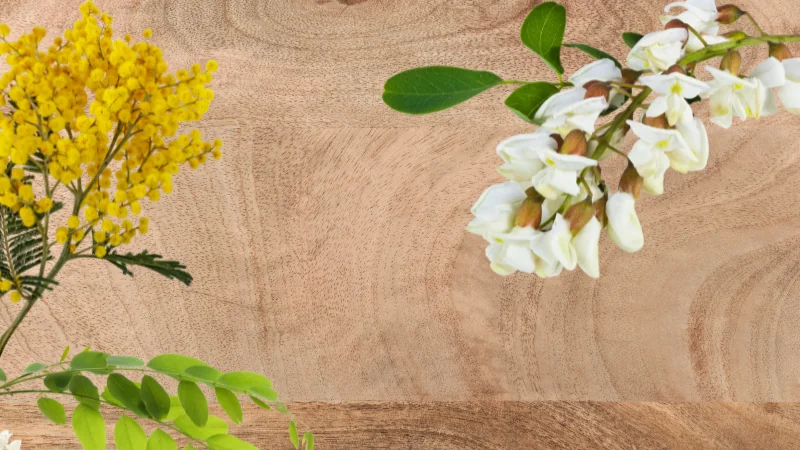The story of Acacia wood is deeply rooted in ancient civilizations, folklore, and diverse ecosystems around the world. Exploring the origins of Acacia wood reveals much about its global influence and unique qualities. Here are some intriguing facts about where Acacia wood comes from and why it’s so special.
1. Acacia Has Roots in Ancient Egypt
Acacia wood was considered a precious material in ancient Egypt. The Egyptians valued it not only for its durability but also for its religious and symbolic significance. They used it in various sacred items, from furniture to ceremonial boats, and even in tombs of pharaohs.
2. It Originates from Arid Regions in the Middle East and Africa

Acacia trees are naturally suited to thrive in harsh, arid climates. The Middle East and parts of Africa have long been home to various species, which are adapted to dry, rocky soil and intense heat.
This resilience made Acacia wood a valuable resource for early societies in these regions, as it was one of the few hardwoods that could grow and thrive where other trees couldn’t.
3. There Are Over 1,000 Species with Unique Adaptations
The world of Acacia is incredibly diverse, with over a thousand species spread across different continents.
Though the largest variety is found in Australia (home to around 1,000 species alone), these species are also native to Africa, the Americas, and Asia.
Each species has adapted uniquely to its environment, which gives this wood its varied characteristics—from density to grain patterns.
*This diversity helped early civilizations make the most of local Acacia trees, adapting their use depending on the specific characteristics of the species available in their region.
4. They Are Known as “Wattle” in Australia
In Australia, Acacia trees are often called “Wattle,” a name that has deep historical roots. Aboriginal Australians have used these for thousands of years, not only as a material for building but also for crafting tools, weapons, and even medicinal applications.
5. Ancient Greeks and Romans Held Acacia in High Regard
Acacia wood’s historical reach didn’t stop in Egypt or the Middle East. In Greece and Rome, it was appreciated for its strength and was commonly used in constructing weapons, tools, and structures that demanded durability.
6. Spiritual Symbolism in Ancient Religions
Acacia has long been intertwined with spiritual symbolism. Many ancient cultures associated it with immortality and renewal, and it often appears in religious texts and myths.
Its symbolism didn’t stop there; it carried over into African and Middle Eastern folklore as well, where the tree symbolized protection, resilience, and connection to the divine.
7. Indigenous African Communities’ Use of Acacia
Sieh dir diesen Beitrag auf Instagram an
African communities have long relied on Acacia for various purposes, from creating shelter to crafting utensils. One particularly well-known African species, the Acacia Senegal, is native to the Sahel region and was prized for its gum—a resin that was used in foods, medicines, and even art.
The wood itself was cherished for its durability, especially in a region where materials that could withstand intense sun and dry conditions were hard to come by.
8. Symbol of Resilience and Survival
Throughout history, Acacia has been a symbol of resilience and survival. In Egypt and other parts of the Middle East, the tree became associated with endurance, often depicted in folklore as a symbol of life. Its ability to flourish in some of the world’s harshest climates made it a fitting emblem of strength.
9. Mentioned in Ancient Texts Beyond the Bible
While many know about the biblical references to Acacia, it also appears in other ancient texts, highlighting its widespread recognition. Some Hindu scriptures mention it, and it even appears in some of the earliest recorded writings of the Middle East.
This tree was seen as a wood that connected humanity to nature in a deep, almost sacred way.
10. Acacia Wood and Ancient Healing Practices

It may come as a surprise, but Acacia was typically associated with medicinal practices in ancient times.
Different parts of the tree—not just the wood but the bark, leaves, and gum—were used for their believed healing properties.
In ancient Egyptian medicine, parts of this tree were commonly used to treat wounds, fevers, and infections.
11. Ancient Egyptian Artisans Cherished Acacia’s Grain and Color

It wasn’t just Acacia’s durability that made it valuable to ancient civilizations—its natural beauty played a role as well. Ancient Egyptian artisans admired Acacia for its fine grain and rich, golden-brown hues.
This aesthetic appeal led them to use it for decorative items, religious artifacts, and royal furniture.
Closing Thoughts
What began as a tree surviving in challenging climates became a symbol of strength, endurance, and beauty across civilizations. Acacia wood’s origins are nothing short of remarkable.
It’s a wood with deep historical, cultural, and even spiritual connections to the places and people who have relied on it for centuries.










